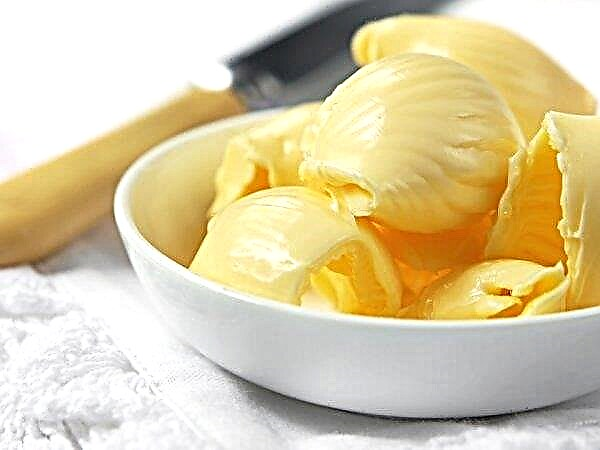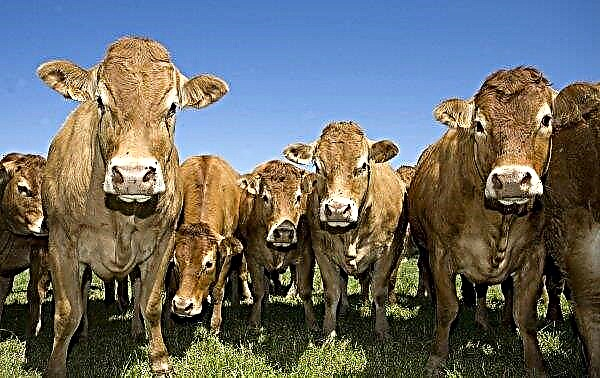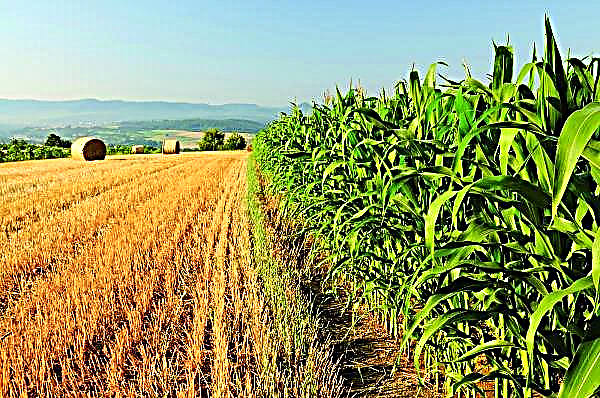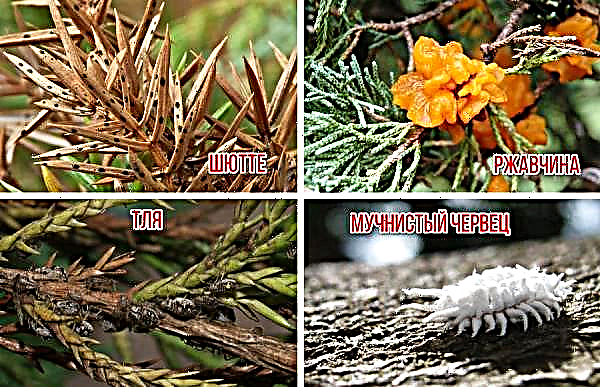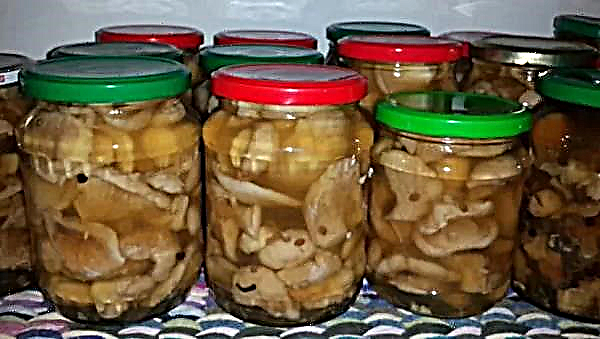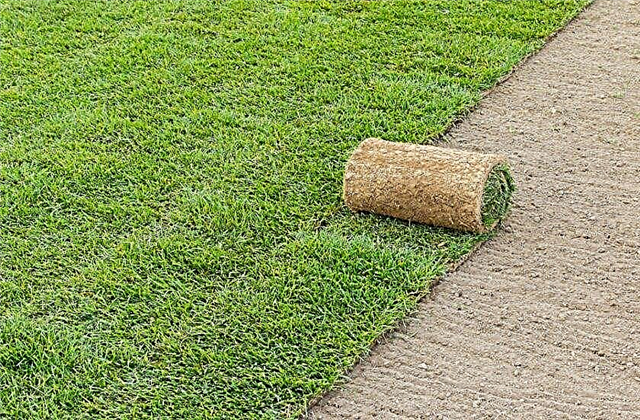When raising domestic chickens, sooner or later there comes a time when they are sent for slaughter. The procedure for slaughtering chickens, at first glance, seems very simple, but it is not. It is necessary to prepare the birds for slaughter, do this procedure correctly and carcasses. And so that the meat does not deteriorate, you need to know the rules for its storage. How to chop the chicken properly and what to do next with it will be discussed in the article.
Preparing chickens for slaughter
An important stage immediately preceding the slaughter is the preparation of birds. The importance of this procedure cannot be underestimated, since the quality, appearance and taste of chicken meat directly depend on it. The readiness of birds for slaughter is determined depending on the direction of the breed. Broilers are sent to slaughter after reaching a body weight of 2–2.5 kg, and hens of egg breeds - after a decrease in egg production.
Did you know? At large UK poultry farms that breed egg chickens, male hatched chicks are immediately sent to slaughter in a carbon dioxide chamber.
The list of preparatory actions is described below:
- Select hens that are intended for slaughter and place them in a separate room or cage with a trellised bottom.
- During selection, birds must be caught carefully so as not to damage their wings and preserve the beautiful appearance of the meat. It is best to catch birds by their legs - this will prevent the formation of hematomas on the carcass.
- Stop feeding the selected birds 18 hours before slaughter so that after the procedure no undigested food remains in their intestines, goiter and esophagus. It will cause putrefactive processes in the carcass, which will negatively affect the taste and smell of meat, as well as its shelf life.
- Give water to the birds until the very moment of slaughter so that the carcass does not lose weight, and the feed remaining in the chicken’s stomach is digested faster.
- To promote better bowel cleansing, birds can be given a laxative. To do this, use a 2% solution of glauber's salt or wheat bran, rye flour is also suitable. Laxative should be given a day before slaughter.
- On the eve of the day of slaughter in the room with hens, you need to leave the lighting all night. This leads to disorientation of birds in time and accelerates the digestive processes in the intestine.
- To get clean feathers and fluff, before slaughtering chickens you need to redeem.

How to chop chicken
There are several ways to slaughter a chicken. The choice of slaughter technique depends on the experience of the person and the number of birds sent for slaughter. Consider each technique in more detail.
Chopping off the head
The most common way to slaughter domestic chickens is by chopping off the head. This method takes a minimum of time and does not prolong the torment of the bird, but requires precision movements.
Important! It is better for novice poultry farmers to use the simplest slaughter method to save themselves and the chicken from torment.
Consider a step-by-step instruction of actions:
- Prepare a sharpened cleaver or ax.
- Tie the bird legs or place it in a bag with a hole made for the head.
- Lay the chicken horizontally on a stable, clean surface so that its neck is open for impact.
- Take a cleaver or an ax into the working hand, grasp the bird’s head with a non-working hand.
- In one quick and clear motion, chop the chicken's neck.
- So that blood flows out of the carcass faster and does not spoil the meat, the headless chicken is hung upside down for several minutes and spread its wings.
 The advantage of this method of slaughter is its speed. Even a beginner poultry breeder can use it, and a chicken dies instantly. The disadvantage of this method is the short shelf life of meat. Blood flowing through a severed neck, gets on the carcass and serves as a favorable environment for the growth of bacteria.
The advantage of this method of slaughter is its speed. Even a beginner poultry breeder can use it, and a chicken dies instantly. The disadvantage of this method is the short shelf life of meat. Blood flowing through a severed neck, gets on the carcass and serves as a favorable environment for the growth of bacteria.Stun
This procedure is usually used by beginner poultry breeders or when slaughtering chicken by the method of external incisions on the neck. Stunning helps immobilize the bird and simplify the process of slaughter. The chicken is taken by the legs and held upside down.
Important! After stunning, the muscles on the entire surface of the carcass relax, which contributes to a faster draining of blood after slaughter and simplifies plucking of feathers.
You can perform the stunning procedure in the following ways:
- inflict a precise and powerful blow to the bird on the head with a blunt heavy object;
- several times wrap the chicken around its axis - as a result of this, the bird is disoriented in space and does not move for some time.

Single and double cut
Often, in small households, slaughter technology is used in which incisions are made on the outside of the neck of the bird. This method requires a certain experience and accuracy of movements.
Step-by-step instructions for slaughtering domestic chicken by the method of unilateral or bilateral incisions are presented below:
- Prepare a very sharp knife with a small width.
- To tie the legs of the bird or to stun it in one of the ways described above. Lay the chicken on a horizontal surface.
- Take the knife into the working hand. With your second hand, grab the bird by the head, holding the beak.
- When using the method of one-sided incision with a knife, cut the skin of the neck of the bird at a distance of 2 cm down from the earlobe. As a result, the carotid artery and jugular vein are cut. The length of the incision should not exceed 1.5–2 cm.
- When using the method of double-sided incision with a knife, a through hole is pierced in the neck of the chicken at a distance of 1 cm down from the earlobe. After that, the knife tip is carefully rotated inside the neck and all carotid arteries and jugular veins are cut.
- To drain the blood, the bird is hung upside down over the tray for several minutes. A cotton swab is inserted into the chicken's beak to absorb blood.
 The advantage of such a slaughtering technique is the preservation of the attractive appearance of the carcass. But at the same time it is difficult to completely bleed the bird, therefore such a carcass is not subject to long storage and should be used or frozen immediately after slaughter.
The advantage of such a slaughtering technique is the preservation of the attractive appearance of the carcass. But at the same time it is difficult to completely bleed the bird, therefore such a carcass is not subject to long storage and should be used or frozen immediately after slaughter.Processing of chickens after slaughter
After the slaughtering procedure, it is necessary to process the chicken carcasses for their subsequent sale, storage or eating. At the same time, it is important to properly pluck the bird, clean its entrails and, if necessary, cut the carcass into beautiful portions.
Did you know? You can immerse the chicken in a state of stillness, if you hold it on the ground and draw a straight line in front of it, starting from the beak.
How to pluck a chicken
Before further cutting the chicken carcass, it must be cleaned of feathers and fluff. You need to do this correctly in order to keep the skin of the bird whole and beautiful.
You can pluck chickens in several ways:
Consider the rules for plucking chicken:
- The bird is laid on a flat horizontal surface and large feathers begin to be pulled out in the area of the tail and wings. They are removed most easily.
- Then the remaining feathers located on the chest, head, legs and neck are plucked. The feathers from the head and neck of the chicken are the most difficult to remove, so you can scald them again once more for 30 seconds.
- It is necessary to pull out the plumage and down of the chicken in the direction of their growth.
- When plucking, you need to grab a small amount of the feathers of the bird with your hand. This will greatly facilitate the pulling out of feathers and keep the skin of the carcass beautiful and whole.
- Small feathers and hemp that have remained on the skin after plucking are carefully removed with tweezers or a blunt knife.
- Scorch chicken over a gas burner or blowtorch. This will help to permanently remove small feathers and imperceptible remains of feathers. In order not to spoil the skin, it is necessary to keep each part of the skin of the carcass above the fire for no more than 2-3 seconds.
- Rinse the carcass thoroughly in warm water to remove soot and lint from it.
Litter removal
So that the litter remaining inside the chicken carcass does not spoil the taste of meat, it must be removed. This procedure is carried out after plucking the bird so that the stool does not fall on the meat during the evisceration of chicken.
To remove droppings from the body of the chicken, you must perform the following steps:
- Insert a clean cotton swab into the bird’s beak to absorb the remaining blood that is released when stool is removed.
- Lightly crush the chicken’s stomach with your hand - as a result, all litter remaining inside the carcass will come out through the cloaca.
- If at the same time the litter fell on the paws of the bird - they must be thoroughly washed in water.

Gutting bird
The next step in the processing of chicken after slaughter is gutting the carcass. This removes the internal organs, most of which are subsequently used for food or for feed to other birds.
Did you know? The total number of chickens on the globe is 3 times higher than the number of people and is about 19 billion individuals.
Step-by-step instructions for eviscerating chicken carcasses are described below:
- Place the carcass in cold water for 10 minutes. This is necessary so that the meat does not become dark from the influx of blood into the capillaries.
- To clean the chicken’s mouth from the remnants of blood. To do this, squeeze her throat with her fingers and push a blood clot in the direction of the beak.
- Wipe the beak and put a paper swab inside it.
- Lay the chicken on a flat horizontal surface with the stomach up.
- Make a circular incision around the cloaca, and then a longitudinal section from the keel to the anus. The length of the longitudinal incision should be about 4 cm. All incisions are made carefully so as not to crush the intestines and prevent the leakage of bile.
- Carefully remove the intestines with cloaca from the carcass so that its contents do not get on the poultry meat. Gently separate the stomach from the end of the duodenum.
- In turn, remove the heart, kidneys, stomach and liver from the carcass. These offal are suitable for human consumption.
- Remove the esophagus, lungs, trachea, ovaries or testes, spleen. These organs can be used to feed other birds.
- Cut off the bird's head at the level of the second cervical vertebra.
- Trim wings to the elbow joint and legs to the heel joint.
- Rinse the inside of the chicken carcass thoroughly with water and wipe it dry. Leave the carcass at room temperature for several hours, so that it is completely cooled, and the meat acquires a pleasant aroma and delicate taste.
Video: gutting a rooster or chicken
How to chop chicken into portions
Usually, chicken is cut into portions before being further stored or eaten. This allows you to cook several separate dishes from it.
Chicken must be cut on a flat horizontal surface with a sharpened knife. With little experience, cutting a bird takes no more than 10 minutes. Consider the basic rules for cutting chicken carcass into portions:
Consider the basic rules for cutting chicken carcass into portions:
- Cut the chicken legs by making an incision between the body and thigh. Chicken legs can be left whole or divided into legs and hips.
- Separate the wings by making an incision along the shoulder joint. Optionally, you can separate the first phalanx of the wing, on which there is very little meat.
- Insert the knife into the body of the chicken and cut it parallel to the spine on both sides.
- Make another incision on the shoulder joints to completely separate the breast from the back.
- Cut the back into two parts. You need to cut it in the place where the bird’s chest cage ends.
- Put the separated breast with the skin up and make a longitudinal cut in the center, pressing the knife to the sternum located under the meat.
- Holding the meat with your fingers, separate both halves of the fillet from the breast bone with a knife.
Important! When cutting chicken carcass into portions, all the cuts should be done only on the joints.
Carcass storage
In small households, chickens are usually grown not for the sale of meat, but for its storage and consumption. So that the meat does not deteriorate and retains a pleasant delicate taste, you need to follow some recommendations for its storage. Depending on the period of time, the storage of chicken meat can be:
Depending on the period of time, the storage of chicken meat can be:
- short-term - carcasses are placed in a refrigerator or cellar. You can wrap them with a clean cloth dipped in vinegar - this will help to keep the chicken fresh for longer. Thus, meat can be stored for 3 to 5 days at a temperature of –4 ... 0 ° C;
- long term - carcasses are frozen in the freezer. For better storage, dip chicken in water and freeze to form an ice crust around the carcass. In the freezer, frozen meat can be stored in paper or plastic bags for several months.
Many small farmers grow domestic chickens for diet and tasty meat. Implementation of the described recommendations for slaughtering and butchering birds will help to get properly processed chicken carcasses, suitable not only for eating in the near future, but also for long-term storage.


